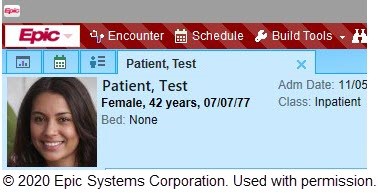Blog Post
The Power of the Picture
NOTE: “The Power of the Picture” was reproduced here as a CRICO Safety Salute with permission from Brigham and Women’s Hospital
For this post, the Department of Quality and Safety at Brigham and Women’s Hospital asked Hojjat Salmasian, MD, MPH, PhD, Brigham Health medical director of Data Science and Analytics, to discuss an innovative project involving patient photographs that is helping keep our patients safer.
Innovations in patient safety do not have to be complicated. Sometimes, a solution to ensuring patients receive the right treatment is as simple as having their photograph taken and displayed in their electronic health record (EHR).
Nationally, medication errors are a significant patient safety risk and wrong-patient errors are an important root cause of medication errors. Wrong-patient order errors occur when a provider orders a medication, test or procedure for the incorrect patient. The consequences of wrong-patient orders can be significant, even resulting in death. At the Brigham, we have identified this as an important vulnerability and have begun to re-think how wrong-patient errors can be prevented.
Our hospital came up with a potential solution: If a patient’s headshot photo was included on the main screen of his or her EHR, would providers be less likely to confuse patients and make mistakes? This intervention is particularly appealing because it doesn’t interrupt the clinicians’ workflow, unlike electronic alerts or “pop-ups.”
The project team chose the Emergency Department (ED) as the first location to implement this new strategy for several reasons. The ED is one of the major points of entry for our patients, and therefore taking photos in the ED will ensure patients benefit from this safety plan throughout their hospital stay. Additionally, care teams in the ED frequently multitask, caring for multiple patients simultaneously– these factors contribute to the ED setting being a higher risk for placing an order for the wrong patient.
Beginning in 2017, when patients arrived at the ED, staff in Patient Access Services would introduce the initiative and explain the safety benefits of having a photo displayed in the EHR. If a patient agreed to participate, the registrar would take a photo using a handheld device and upload it into the EHR. When a provider opens the patient’s EHR, the patient’s photo would be visible within the EHR Header (Figure).

Data and photograph shown in this image are not of a real person.
Multiple leaders from our institution came together to make this project a successful reality. This includes Adam Landman, MD, MS, our chief information officer, who is also an emergency physician and Bonnie Blanchfield, ScD, assistant professor of Medicine, Harvard Medical School and Harvard TH Chan School of Public Health. Landman and Blanchfield also secured funding from CRICO (our liability insurance provider) to subsequently study the impact of the patient photos on patient safety.
A recent analysis of data from the initiative shows that when patient photos were available in the EHR, providers were at least 35% less likely to place an order for the wrong patient. Although wrong patient orders occur only in about 1 of every 1000 orders, at a hospital like Brigham and Women’s Hospital where providers place millions of orders every year, this 35% reduction has profound implications for improving patient safety within our hospital. We owe this success primarily to two groups: our patients, who partnered with us in this initiative, and our ED Patient Access staff, led by Kelley Joyce and Kaila Centeio.
Due to the enormous success of the program, the Brigham is excited to expand this program into all inpatient areas. We believe this project is an example of a simple, “low-tech,” and inexpensive solution of how thinking outside of the box can help improve patient safety, while ensuring our providers are able to focus on what they do best: providing the highest quality care to our patients.
Related Blog Posts
Provider Burnout + Malpractice Risk = The Lost City of Atlantis


Ominous Themes and Shared Challenges from Industry Conferences

Good Catch! Building the Framework for Ambulatory Safety Nets

